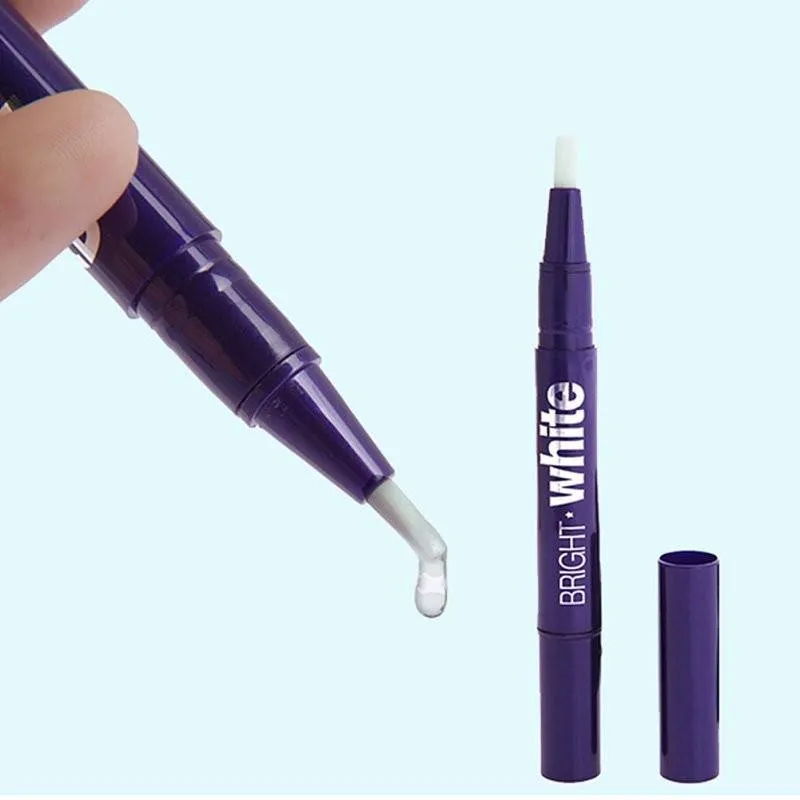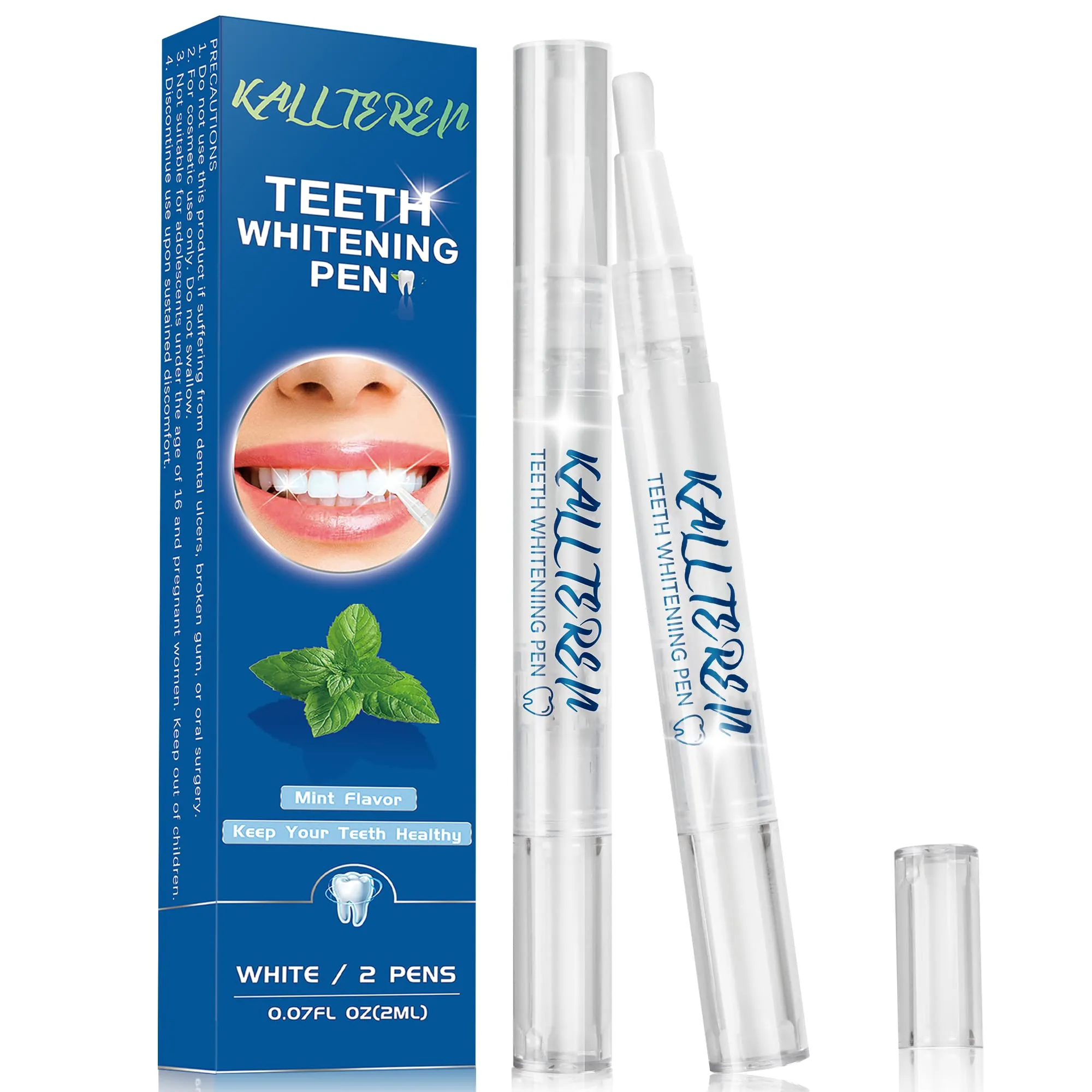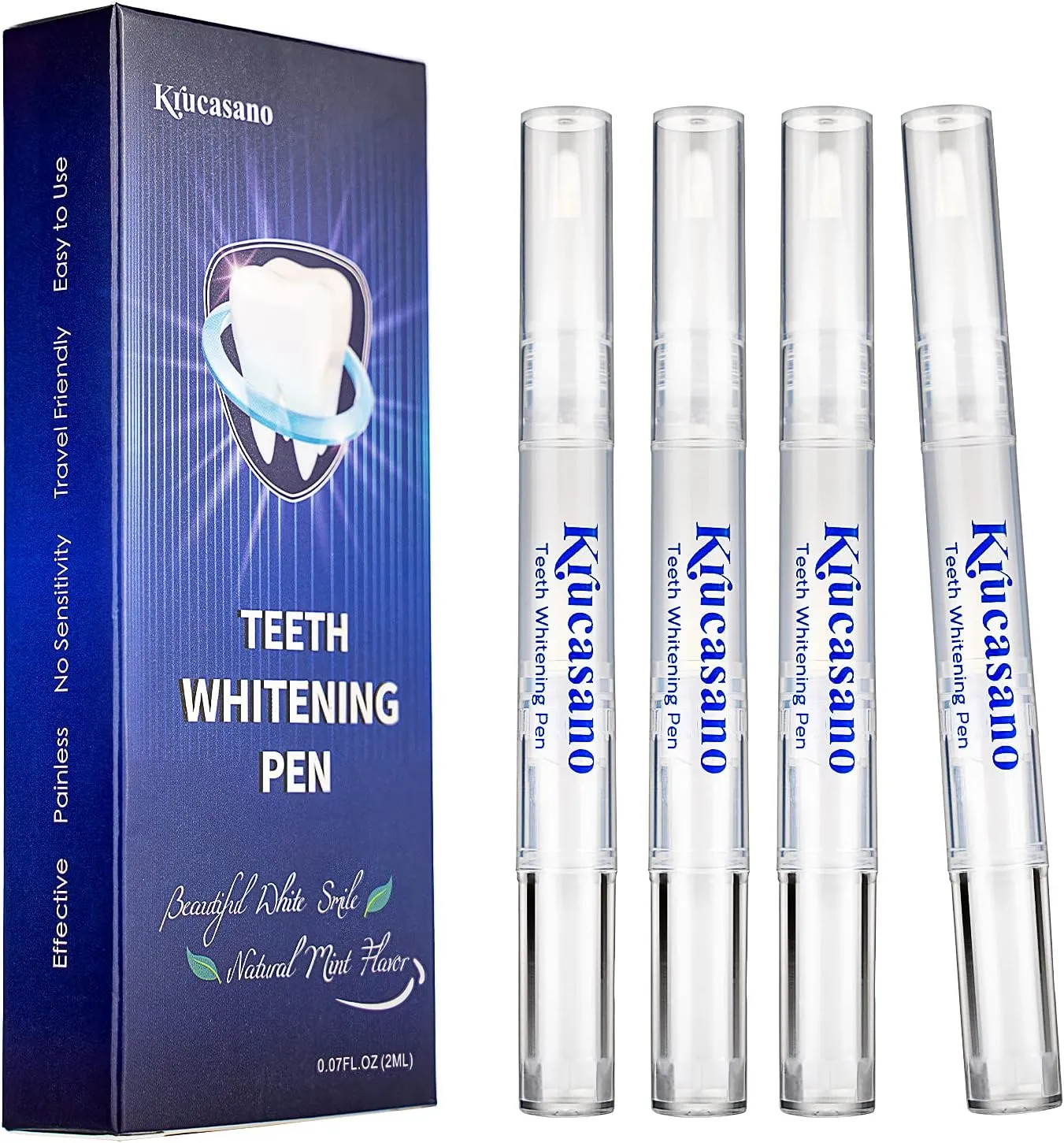Teeth Whitening Pen Top 5 Facts
Are you considering using a teeth whitening pen to brighten your smile? These pens have become increasingly popular due to their convenience and ease of use. However, it’s essential to understand the safety aspects before incorporating them into your oral hygiene routine. This guide will provide you with the top 5 facts about the safety of teeth whitening pens, helping you make an informed decision and achieve a radiant, healthy smile. We will delve into how these pens work, the ingredients they contain, potential risks, and how to use them safely. Let’s explore the world of teeth whitening pens and uncover the truth behind their safety.
How Whitening Pens Work
Teeth whitening pens are designed to deliver a bleaching agent directly to the surface of your teeth. The primary mechanism involves applying a gel, usually containing a form of peroxide, directly onto the enamel. This gel penetrates the porous enamel surface, breaking down the stains and discoloration that accumulate over time. The pens typically use a brush-on applicator, making the application process quick and easy, allowing for targeted treatment of individual teeth or specific areas. The peroxide reacts with the stain molecules, causing them to break apart and lighten, which results in a whiter appearance. The effectiveness can vary based on the concentration of the whitening agent and the type of stains being treated.
Ingredients Commonly Found in Whitening Pens

Understanding the ingredients is critical when assessing the safety of teeth whitening pens. The main active ingredients are hydrogen peroxide or carbamide peroxide, which are bleaching agents. These compounds are responsible for the whitening effect. Other ingredients might include flavoring agents, stabilizers, and thickening agents to improve the product’s consistency and taste. The concentration of the active ingredient varies among different pens; higher concentrations may yield quicker results but also increase the risk of side effects. It’s important to check the label for the specific ingredients and their concentrations to understand what you’re applying to your teeth. Always look for pens that have been tested and approved by relevant health authorities to ensure safety.
Hydrogen Peroxide
Hydrogen peroxide is a common active ingredient in teeth whitening pens. It acts as a bleaching agent, breaking down stain molecules to whiten teeth. The concentration in over-the-counter products is generally lower to minimize potential risks, such as sensitivity. It’s important to follow the product instructions carefully, as excessive or improper use can lead to adverse effects. Hydrogen peroxide works by penetrating the enamel and oxidizing the discolored molecules, leading to a brighter smile. While effective, its use needs to be balanced with caution to avoid any harmful consequences. Always prioritize products with approved safety standards and consult with a dental professional if you have any concerns about its use.
Carbamide Peroxide
Carbamide peroxide is another active ingredient used in teeth whitening pens. It breaks down into hydrogen peroxide and urea, releasing hydrogen peroxide over time. This provides a slower, more sustained whitening effect compared to products with higher concentrations of hydrogen peroxide alone. Carbamide peroxide is often preferred in products designed for longer contact times, such as overnight treatments. The slow release of hydrogen peroxide helps minimize sensitivity, offering a gentler approach to teeth whitening. As with any whitening product, following the instructions and consulting with a dentist is recommended for safe and effective results.
Potential Risks and Side Effects

While teeth whitening pens are generally considered safe when used as directed, there are potential risks and side effects to be aware of. The most common issues include tooth sensitivity and gum irritation. Overuse or the use of products with high concentrations of whitening agents can exacerbate these effects. In rare cases, enamel damage can occur if the product is used improperly or for an extended period. It is essential to be informed about these potential issues and take appropriate precautions to minimize the risks. If you experience any adverse effects, discontinue use and consult your dentist immediately. Prioritizing your oral health will ensure you receive the best possible results.
Tooth Sensitivity
Tooth sensitivity is a common side effect of teeth whitening pens. The whitening agents can penetrate the enamel and reach the dentin, which contains nerve endings. This can cause temporary sensitivity to hot or cold temperatures. To minimize this, use the pen as directed and avoid overuse. Consider using a toothpaste designed for sensitive teeth during the whitening process. If the sensitivity becomes severe or persistent, discontinue use and consult your dentist. Your dentist can provide recommendations to help mitigate the discomfort and ensure the safety of your teeth.
Gum Irritation
Gum irritation is another potential side effect, often caused by the whitening agent coming into contact with the gums. This can lead to redness, swelling, or soreness. To prevent this, apply the gel carefully, avoiding contact with the gums. Excess gel should be wiped away immediately. If irritation occurs, stop using the pen and rinse your mouth with water. Using a soft-bristled toothbrush and gentle brushing can help. If the irritation is severe or does not subside, seek advice from your dentist. Proper application and adherence to instructions are key to minimizing this risk.
Enamel Damage

Enamel damage is a less common but more serious risk associated with improper use of teeth whitening pens. Overuse, the use of highly concentrated products, or prolonged exposure to whitening agents can weaken the enamel. This can lead to increased sensitivity, and in severe cases, erosion of the tooth surface. To avoid enamel damage, always follow the product instructions carefully, and avoid using the pen more frequently than recommended. Regular dental checkups can help monitor the health of your enamel and identify any potential problems early. If you have any concerns, consult with your dentist for guidance on safe whitening practices.
How to Use a Whitening Pen Safely
Using a teeth whitening pen safely requires careful adherence to the product instructions and some additional precautions. Start by reading the instructions thoroughly before your first use. Apply the gel sparingly, ensuring that it only contacts the surface of your teeth and avoiding your gums. Limit the frequency and duration of use as recommended by the manufacturer. After application, avoid eating or drinking for the recommended time to maximize effectiveness and minimize the risk of side effects. Store the pen properly, away from heat and direct sunlight. Combining these steps with regular dental care will help ensure a safe and effective whitening experience. Regular dental checkups are important to assess the health of your teeth and gums.
Consult Your Dentist
Before using a teeth whitening pen, consult your dentist. They can assess your oral health and determine if whitening is appropriate for you. Dentists can identify any existing dental issues, such as cavities or gum disease, which could be exacerbated by whitening treatments. They can also provide personalized recommendations based on your specific needs and the condition of your teeth. A dentist can advise on the best whitening products and techniques for your situation. Their professional guidance will help you avoid potential risks and ensure a safe and effective whitening experience, leading to optimal results while maintaining the health of your teeth and gums. Your dentist is also best positioned to recommend alternative options and treatments.
Follow Instructions Carefully

Always follow the product instructions precisely when using a teeth whitening pen. This includes the recommended application frequency, duration, and any specific guidelines for use. Incorrect usage can increase the risk of side effects such as tooth sensitivity or gum irritation. Pay attention to any warnings or precautions mentioned on the product label. If you experience any adverse effects, stop using the pen immediately and consult your dentist. Following the instructions ensures that you use the product as intended, maximizing its effectiveness while minimizing potential risks. Consistent and correct application will help you achieve the desired results safely and effectively.
Limit Use
Limit the use of teeth whitening pens to the recommended frequency and duration. Overuse can lead to increased sensitivity and potential damage to your enamel. Do not exceed the product’s suggested application schedule, as this could exacerbate side effects. Be patient; noticeable whitening results take time, and using the pen more often won’t necessarily speed up the process. If you are unsure about the frequency of use, consult your dentist. Maintaining a consistent and appropriate application schedule is crucial for safe and effective whitening. Remember, a brighter smile is not worth compromising your oral health. Patience and consistency are the keys to safe and effective teeth whitening.
Alternatives to Whitening Pens
If you’re seeking alternatives to teeth whitening pens, several other options can help you achieve a brighter smile. Over-the-counter whitening strips and trays offer a convenient and often more potent way to whiten your teeth. Professional teeth whitening treatments, such as those offered by your dentist, provide the most effective and controlled results. These treatments use stronger whitening agents under professional supervision. Other alternatives include whitening toothpastes and mouthwashes, which can help maintain your results or provide a more gradual whitening effect. Your dentist can also suggest other options like veneers or bonding to improve your smile. Choosing the best alternative depends on your specific needs, preferences, and the advice of your dental professional. It’s essential to discuss these options with your dentist.
In conclusion, while teeth whitening pens can be a convenient way to brighten your smile, it’s important to approach them with caution and awareness. By understanding how they work, the ingredients they contain, potential risks, and how to use them safely, you can make an informed decision. Always consult your dentist before using any whitening product and follow the instructions carefully to minimize risks. Prioritizing your oral health will ensure a safe and effective whitening experience, leading to a radiant and healthy smile. Make sure to choose the best approach for your specific needs with the guidance of your dentist.
